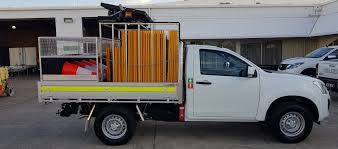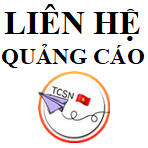In the world of roadwork and traffic management, efficiency and safety are paramount. Roadwork operations often require swift responses to ever-changing conditions, from temporary traffic disruptions to emergency repairs. This is where custom traffic control utes (utility vehicles) come into play, offering unparalleled flexibility and effectiveness for traffic management teams. These specialized vehicles are designed to handle the demanding and dynamic nature of roadwork, providing vital support for a range of tasks such as traffic flow management, road safety, and infrastructure maintenance.
What are Custom Traffic Control Utes?
A traffic control ute is a highly modified utility vehicle, typically a 4x4 or light truck, customized to carry the necessary equipment and personnel to manage roadwork operations safely and efficiently. These vehicles are designed with the needs of roadwork teams in mind, often outfitted with specialized features like traffic cones, barriers, signs, communication tools, and safety gear. They are also equipped with high-visibility markings and lighting systems to ensure maximum safety for workers and drivers in busy work zones.
Custom traffic control utes can be tailored to meet the specific needs of different types of roadwork projects, making them an essential tool for traffic control companies, contractors, and government agencies responsible for maintaining road safety.
Key Benefits of Custom Traffic Control Utes
-
Enhanced Mobility and Accessibility
One of the biggest advantages of a custom traffic control ute is its mobility. These vehicles are designed to be agile and adaptable, capable of navigating various terrains, from urban roads to remote areas. With four-wheel drive capabilities, they can access hard-to-reach work zones, making them ideal for both urban infrastructure projects and road repairs in rural or rugged areas. -
Customizable to Meet Specific Needs
Traffic control operations vary greatly depending on the scale of the project, location, and the type of roadwork being conducted. Custom traffic control utes can be equipped with a range of specific tools and equipment. This might include:- Traffic cones, road signs, and temporary barriers
- Radar guns and speed monitoring devices
- Illuminated safety beacons and high-visibility lighting
- Safety equipment such as roadwork apparel and first aid kits
- Storage space for tools and materials
- Communication devices for coordinating with other team members
By tailoring the vehicle to meet the requirements of each job, teams can maximize efficiency and reduce downtime during roadwork operations.
-
Improved Safety for Workers and Motorists
Roadwork zones are inherently dangerous, with workers exposed to high-speed traffic and unpredictable conditions. Custom traffic control utes are fitted with safety features such as high-visibility paint, flashing lights, and sirens to warn passing drivers. The vehicles also often include barriers or signage to protect workers from traffic, reducing the risk of accidents. Furthermore, the well-organized storage of essential equipment and gear ensures that workers can access tools quickly, enhancing safety and operational speed. -
Efficient Traffic Flow Management
A key function of traffic control utes is their ability to manage and direct traffic around roadwork zones. These vehicles can carry a range of signage and barriers that can be quickly deployed to redirect or slow down traffic, ensuring that drivers can safely navigate the area. Custom utes equipped with traffic control devices allow teams to adjust road conditions in real-time, keeping traffic flowing smoothly while minimizing disruptions. -
Increased Operational Efficiency
Custom traffic control utes streamline many aspects of roadwork operations. With the right tools and equipment preloaded and stored securely, teams can move quickly between work zones and minimize setup times. The ability to adapt to different work environments means fewer delays, ultimately reducing costs for both contractors and government agencies. Moreover, these vehicles help coordinate roadwork efforts with a high degree of precision, ensuring that all necessary tasks are completed promptly and within safety guidelines. -
Environmental Considerations
Many modern custom traffic control utes are designed with eco-friendly features, such as fuel-efficient engines, reduced emissions, and advanced safety technology. By using energy-efficient vehicles and minimizing unnecessary idling, traffic control teams can reduce their environmental footprint while still providing essential services to the public.
Versatility in Different Roadwork Applications
Custom traffic control utes are highly versatile and suitable for a variety of roadwork operations. These include:
- Construction Zones: Utes are used for setting up temporary traffic controls around large-scale construction projects, such as highway upgrades or bridge repairs.
- Emergency Repairs: In the event of accidents or road damage, traffic control utes enable rapid deployment of barriers, signage, and warning systems to ensure the safety of both workers and motorists.
- Maintenance Operations: These vehicles are often used for ongoing road maintenance tasks, including sweeping, pothole filling, and line painting.
- Event Traffic Management: Utes are also deployed for temporary traffic management around events such as festivals, parades, and sporting events, where large numbers of vehicles and pedestrians need to be managed efficiently.
Conclusion
Custom traffic control utes represent a highly effective and flexible solution for managing roadwork operations and traffic safety. By providing the necessary equipment, enhanced mobility, and safety features, these vehicles enable traffic control teams to perform their tasks more efficiently while minimizing risk. Whether working in busy urban environments or remote locations, custom traffic control utes offer the versatility and functionality needed to ensure smooth, safe, and effective roadwork operations.




